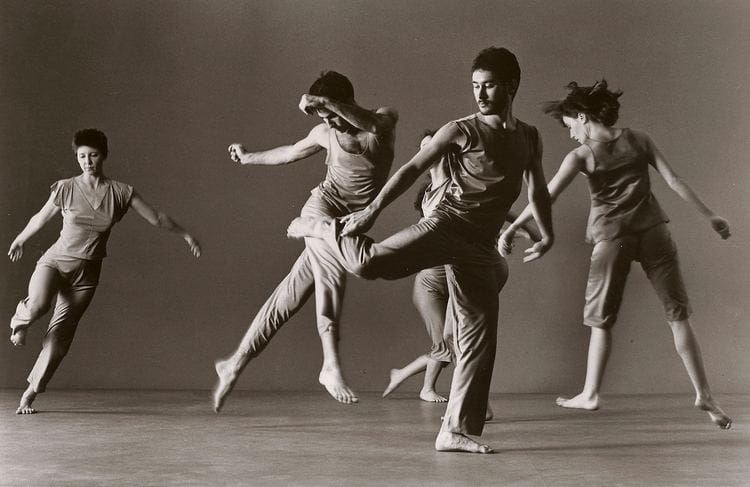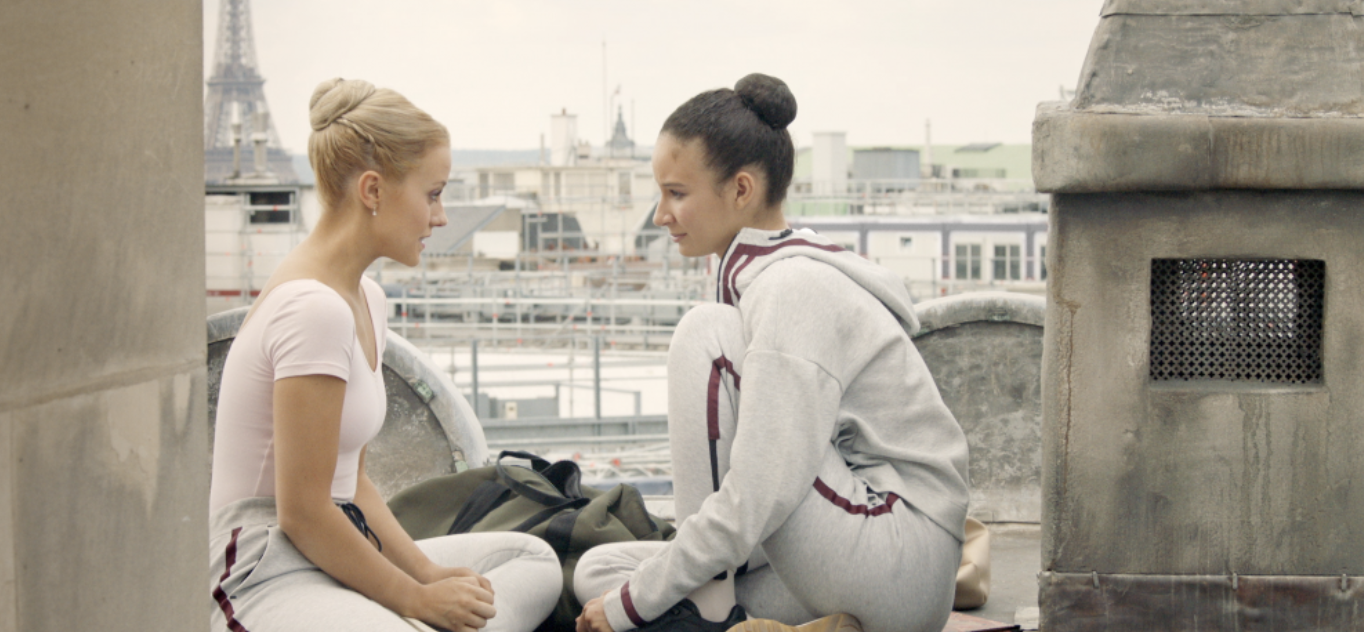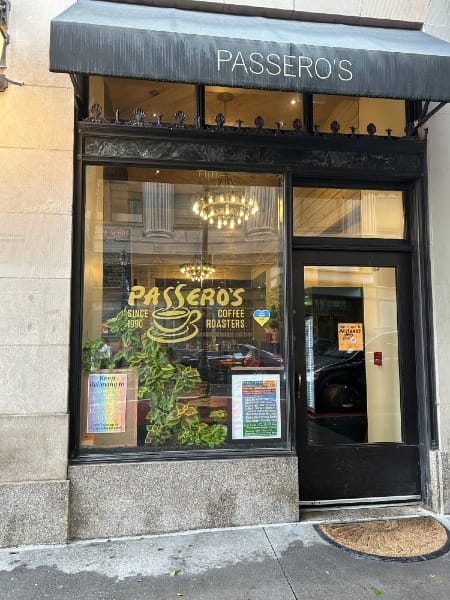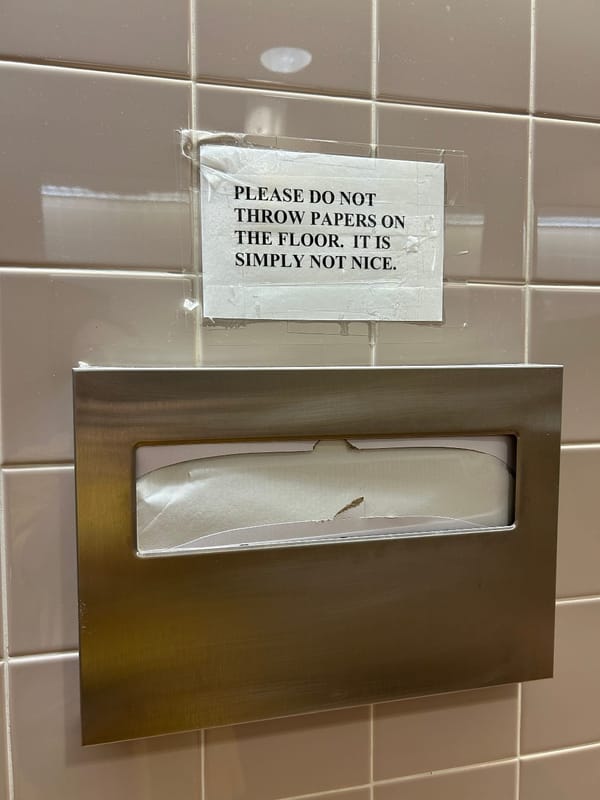Scaling up instead of shrinking
It's likely you've heard about the National Endowment for the Arts (NEA) withdrawing project grants that had already been awarded, which happened Friday, May 2. Many, if not most, of the NEA's staff members have resigned, including the three hardworking and dedicated (and stylish) employees of the Dance division. It's worth taking a look at this crowd-sourced NEA Grant Termination Tracker to get a sense of the breadth of projects the agency was supporting. I feel a few ways when scrolling through that list: proud and moved to see these assorted projects all together, and a little knot in my stomach for each number on the spreadsheet, knowing that each of those now represents an unanticipated gap where the money will have to be found somewhere else or the project won't happen.
The single best commentary I've read on the topic has come from arts leader Michael Rohd, who urges a collective approach to these cuts, rather than each institution focusing on their own gap number and each industry only looking inward.
I want to tell the story of how we are walking alongside and in solidarity with public health workers and educators and park employees and mental health providers and scientists and civil rights lawyers and advocates across America whose fields are being dismantled not just to aggregate power, not just to consolidate control, not just to squash dissent, but to destroy the notion that civic care is a part of our government's contract with its people...and to panic us into erupting field by field, industry by industry, rather than looking across rooms, networks and geographies to see millions of people and institutions being shuttered/hobbled/shamed who all share a common set of beliefs with us- public good is a worthy purpose, creativity is a human need, and care is at the heart of any society that names justice, liberty, freedom or greatness as a central concern.
I'd like to heartily second the ringing call to coalition-building with others:
But even more, I want to look to the circles we have and the circles we can build, to say- Civic care, in all its forms, matters. Lets lift that up as high and loud as we can. Coalitions are the path to mutual support, the road to scaling when they think we’ll shrink, and the blueprint for resistance that we need.
Do you see some creative coalitions forming in your neighborhood or your city? I'd love to hear about them.
On not being alone
One place that might be generative of some new ideas and strategies might come in this workshop that Andrew Simonet is offering for artists this coming Sunday in Philly.

You can register here, and Andrew's emails are so good that I always read them (scroll to the bottom of his webpage to subscribe).
Dancing mothers
One of my favorite Mother's Day tributes came from Isabel Cristo, whose mother danced with Trisha Brown in the '80s and '90s, and works at New York magazine. (Cristo doesn't name her mother in the piece, if you know who she is, let me know! And if you'd like to read the whole email, holler at me and I'll forward it to you.)
Trisha’s choreography may have been a rejection of the orthodoxies of the form, but for me, it’s the baseline of what dance is, and my mom’s way of moving is the beginning and the end of what dance should look like.
The run at the Joyce consisted of two works, Opal Loop and Son of Gone Fishin' from the early ’80s, and even though it’s a whole new generation of dancers in the company, watching them felt like looking at the coils of my mom’s DNA under a microscope.

Divine dancers
We're just doubling down on Trisha this week because... well, no reason is necessary. In the hoopla over the cancelled NEA funding, the company shared this fantastic speech, "Fund for Dance," that Trisha Brown gave in June 1993. In it, the artist gives a description of what her dances are made of and how they run:
Dance is made of people, people and ideas. We make a dance where there wasn't one before ... out of thin air. When you see this dance in performance, you can describe the stage, name the music, characterize the movement, its genre, the form, like it, dislike it or in between it. The success of the choreography however, in my estimation, is predicated on a good idea, courage to pursue it and keep it on course...and a pack of divine dancers to run with me and surprise me with how they manifest my metaphors.
And then in keeping with this week's loose theme of coalition-building and not working alone, she gives this beautiful description of working together towards a common goal.
In addition, I have often said that what I do is work to find a way to work with people. They come in all manner of psychological packages, you know. I therefore propose that all of this intricate, highly evolved experience of people working together in accommodation and accord (and discord and disaccommodation) is visible in the choreography as subtext unstated.
You can read the whole piece on the company's instagram.

What to watch
I think I remember liking Amy Sherman-Palladino's short-lived ballet studio drama Bunheads, so I had high hopes for her new show Étoile, which features a swap between fictional New York City ballet dancers and Paris ballet dancers, but I watched the first episode and found it terrible. The show supposedly took great pains to be accurate but the very first scene has a teacher talking about a rond de jambe en l'air (a circular leg movement in the air), and the student's foot stays firmly on the ground. I barely made it through the whole episode.
If you're looking for a fun frothy ballet TV show, I recommend Find Me in Paris instead, which you can find on hulu or netflix and features time-traveling (via a magical necklace, naturally) ballet students going back and forth from the Paris Opera Ballet school in 1905 to New York City in 2019. Way more charming. (But tell me if I'm wrong! Are you already a big fan of Étoile? Did the street dancing in Find Me in Paris make the whole thing unwatchable for you?)

Sisterly Affection (a bit of Philadelphia appreciation)

A shout-out to my favorite coffeeshop in Center City: Passero's, 834 Chestnut.
- the vibe: unpretentious
- the options for real food: abundant
- the employees: extremely nice and welcoming
- small sadness: no outlets (forgivable)
- the seating: somehow at least 50% of the seats are in a nook or a cranny
If you are new here, welcome! You can find a bit more context on the 'about' page and feel free to forward along to anyone who might be interested. There is usually a loose focus on Philadelphia and dance/performance-related news bits. Each email ends with a moment of Sisterly Affection, as seen and appreciated while out and about in Philly.


